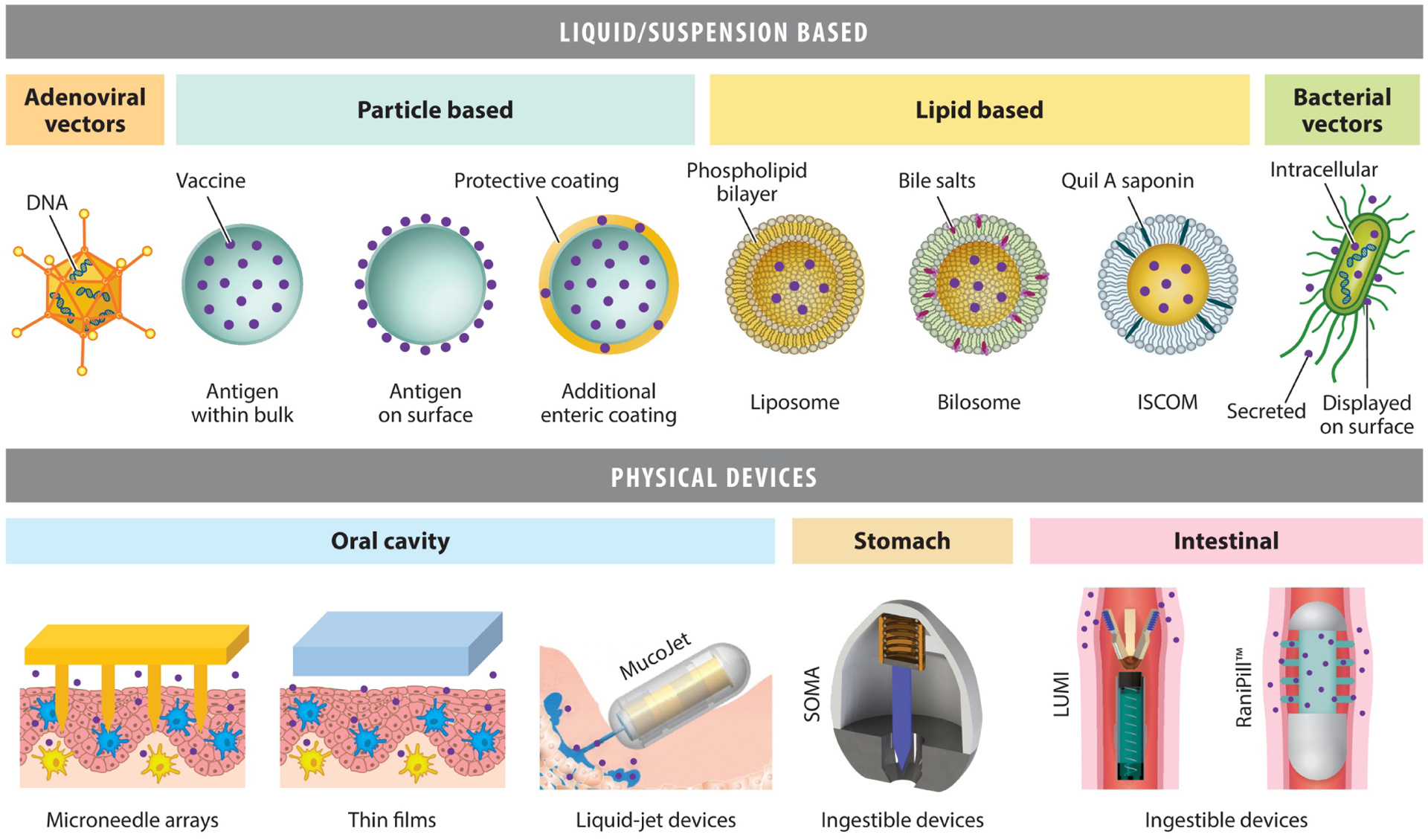Figure 2.

Summary of the main delivery technologies in development for oral vaccination. A variety of liquid/suspension-based approaches have been investigated, including microparticles and nanoparticles, adenoviral and bacterial vectors, and lipid-based approaches. Adenoviral vectors contain a DNA-based cargo that is delivered to and expressed as antigen by host cells in vivo. Bacterial vectors are engineered with DNA to express vaccine antigens that may be either secreted, presented on the cell surface, or contained intracellularly and released in vivo. Particle- and lipid-based approaches may potentially carry vaccine either as preformed antigens or as nucleic acids for expression in vivo. More recently, there has been an expanding range of physical devices that localize vaccine release and/or mechanically disrupt mucosa for highly efficient delivery of a broad range of biologics to target sites in the gastrointestinal tract. These include microneedle arrays, thin films/patches (e.g., mucoadhesive and/or disintegrating), liquid-jet injectors (such as the MucoJet), SOMA, LUMI, and the RaniPill™. MucoJet panel reproduced from Reference 69. Reprinted with permission from AAAS. Abbreviations: ISCOM, immune-stimulating complex; LUMI, luminal unfolding microneedle injector; SOMA, self-orientating millimeter-scale actuator.
